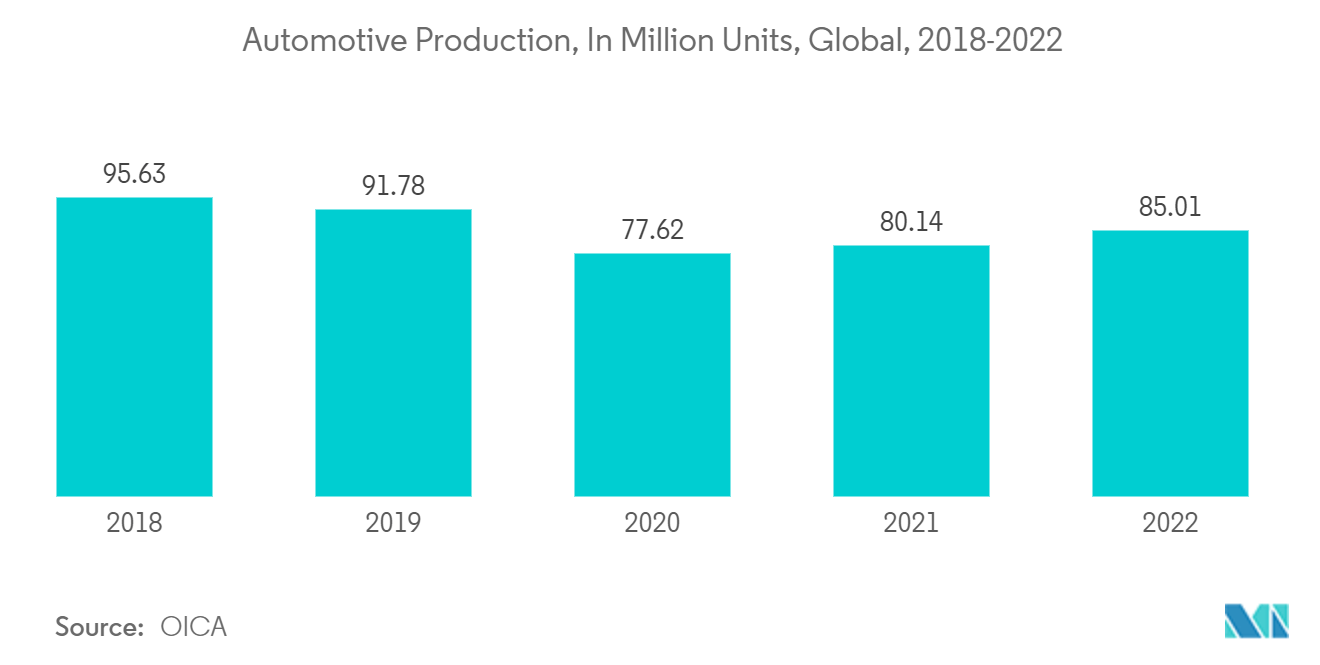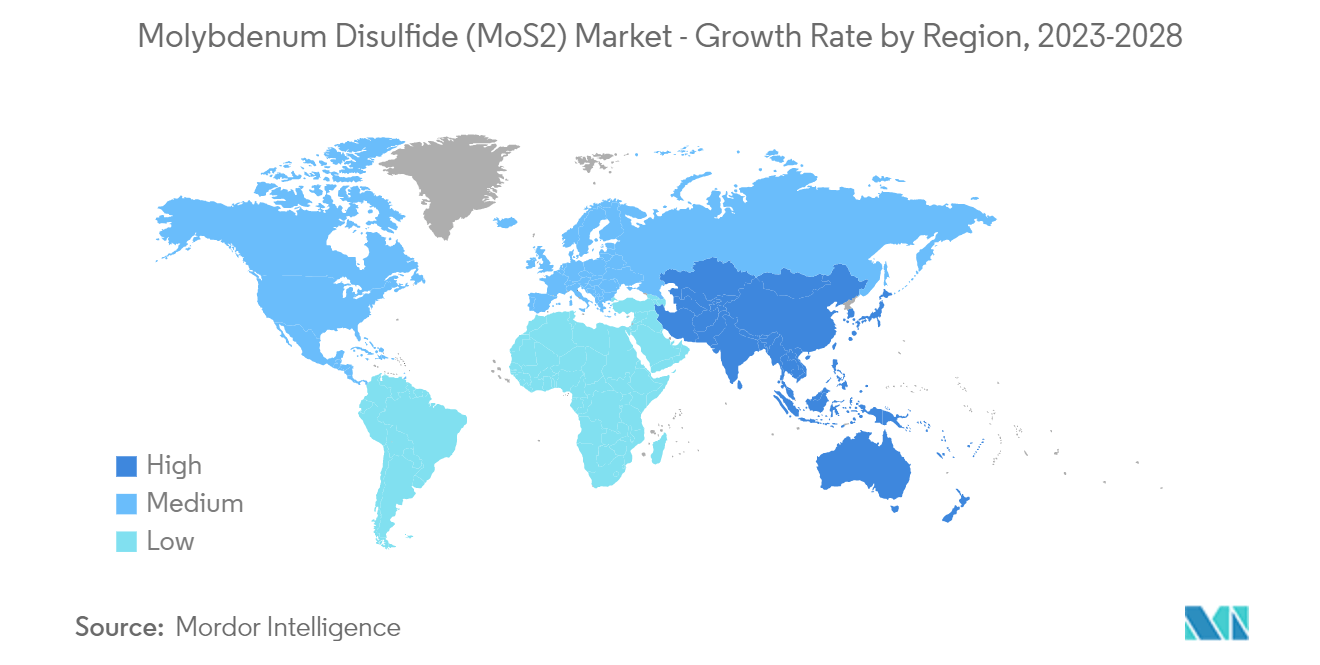Market Trends of Molybdenum Disulfide (MoS2) Industry
Automotive Segment to Dominate the Market
- Molybdenum disulfide is used as a lubricant additive or as a dry lubricant coating for various applications. Molybdenum disulfide greases and lubricants are used for various applications such as bearings, chassis lubrication points, chain drivers, and many other applications.
- Molybdenum disulfide is primarily used in the automotive industry in the form of greases for the lubrication of various parts, including ball joints, pedal shafts, wheel bearing and steering linkages, and lubrication control arms.
- According to the International Organization of Motor Vehicle Manufacturers (OICA), global automotive vehicle production increased to more than 85 million units in 2022 from approximately 80 million units in 2021 at a growth rate of 6%.
- In North America, according to the OICA, automotive production in 2022 accounted for 14.8 million units, an increase of 9.88% compared to the production in 2021, which was reported to be 13.4 million units.
- In Europe, Germany is among the key manufacturer of vehicles. The automobile manufacturing industry in Germany is a prominent shareholder of the overall automotive production in the European region. The country hosts major car-making brands, including Volkswagen, Mercedes-Benz, Audi, BMW, Porsche, etc.
- Furthermore, the rising production of electric vehicles is likely to enhance the market demand from the electric vehicle segment. For instance, according to the EV Volumes, global electric vehicle (EVs) sales reached 10.52 million units in 2022, registering a growth rate of 55 % compared to 2021.
- Hence, owing to the increasing automotive industry across the world, the utilization of molybdenum disulfide is also expected to increase during the forecast period.

Asia-Pacific to Dominate the Market
- The Asia-Pacific region is a hub for various manufacturing activities, including aerospace and defense, automotive manufacturing, electrical and electronics, construction, and many others. This includes a huge consumption of molybdenum disulfide for these activities and thus boosting the demand of the market studied.
- In the Asia-Pacific region, China, Southeast Asia, and South Asia aerospace market are expected to rise at a significant rate, which will further support the demand for the studied market. In China, according to the Boeing Commercial Outlook 2022-2041, around 8,485 new fleet deliveries will be made by 2041 with a market service value of USD 545 billion.
- Moreover, India is projected to have 480 million flyers, which will be more than that of Japan (just under 225 million) and Germany (just over 200 million) combined by 2036, and for that to happen, India will need approximately 2,380 new commercial airplanes by 2038, as stated by Indian Brand Equity Foundation (IBEF).
- Additionally, China has been the largest and most dominant nation in terms of vehicle production and sales of all types. In 2022, automotive production in the country reached 27.02 million units, which increased by approximately 3.4%, compared to 26.08 million vehicles produced in 2021, as stated by the China Association of Automobile Manufacturers.
- For a few years, India has been working in the country's electric vehicle sector. According to a CEEW Centre for Energy Finance report, India has a USD 206 billion opportunity for electric vehicles by 2030, which will demand a USD 180 billion investment in vehicle manufacturing and charging infrastructure.
- Moreover, the Indian electronics market is expected to reach USD 400 billion by 2025. Additionally, India is expected to become the fifth-largest consumer electronics and appliances industry in the world by 2025, as stated by the India Brand Equity Foundation (IBEF).
- Hence, with the rapidly growing end-user industries in countries of the Asia-Pacific region, the region is expected to dominate the global market during the forecast period.


